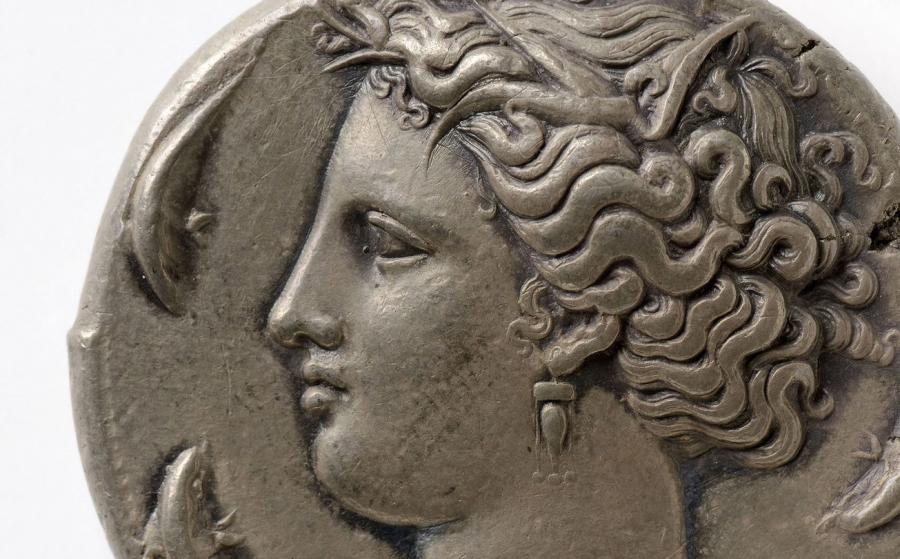Decadrachm of Syracuse
Information sur l’artiste
Euainetos

Décadrachme de Syracuse, avers et revers. Vers 410 av. J.-C.
Image © Lyon MBA - Photo Alain Basset
Galloping quadriga facing left / Head of Arethusa facing left surrounded by four dolphins.
The decadrachm of Syracuse is considered to be one of the finest currencies ever discovered. The portrait of the nymph Arethusa on the reverse, the work of Euainetos, Sicilian master engraver working in Syracuse at the end of the 5th century B.C., has always captured people's imagination. In the words of Euripides, "The beautiful will always be loved".
The decadrachms of Syracuse are exceptional coins in light of their weight and unit, and were probably given away as prizes in the games held following the Athenian defeat in 413. The Attic helmet, shield, greaves, armour, and spear, as well as the inscription, are a reminder that these games, based on those held at Olympia in Greece, were organised in Syracuse every four years. In contrast to the lovely portrait of Arethusa, the force of the quadriga on the reverse takes one by surprise: the way the perspective is depicted gives the impression that it is moving at speed. The horses are not arranged in perfectly symmetrical lines as they often are on more archaic coins, and their hooves are not touching the ground, which gives them great energy and momentum.
Artwork label
Greek school
Minted circa 400 B.C.
Silver
D. 3.6 cm
Giraud Collection, 1911
Inv. GR. 71





